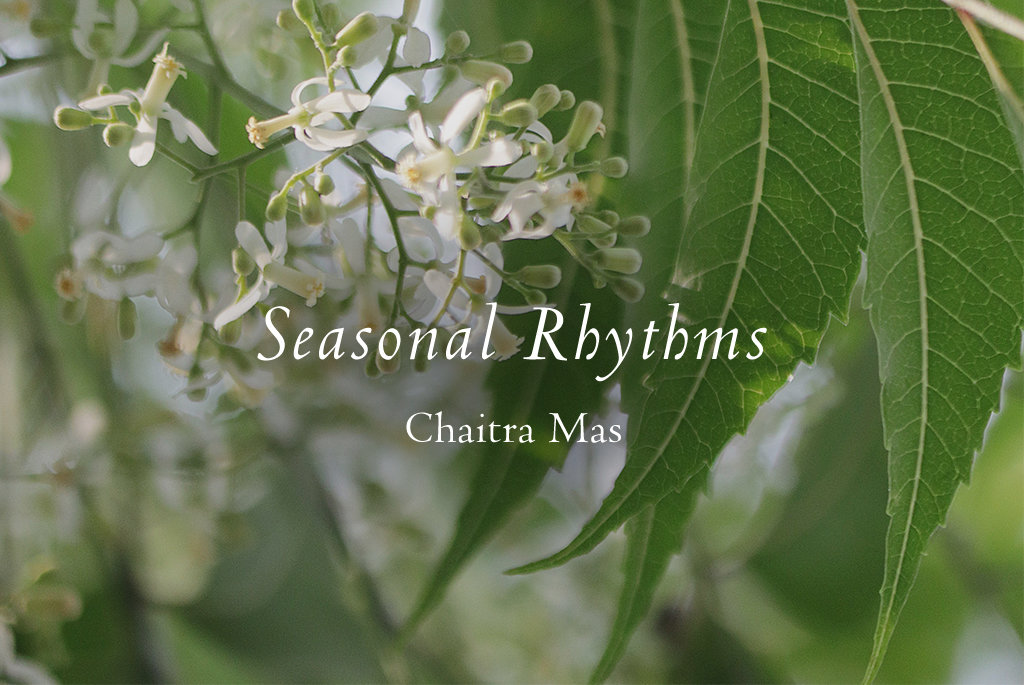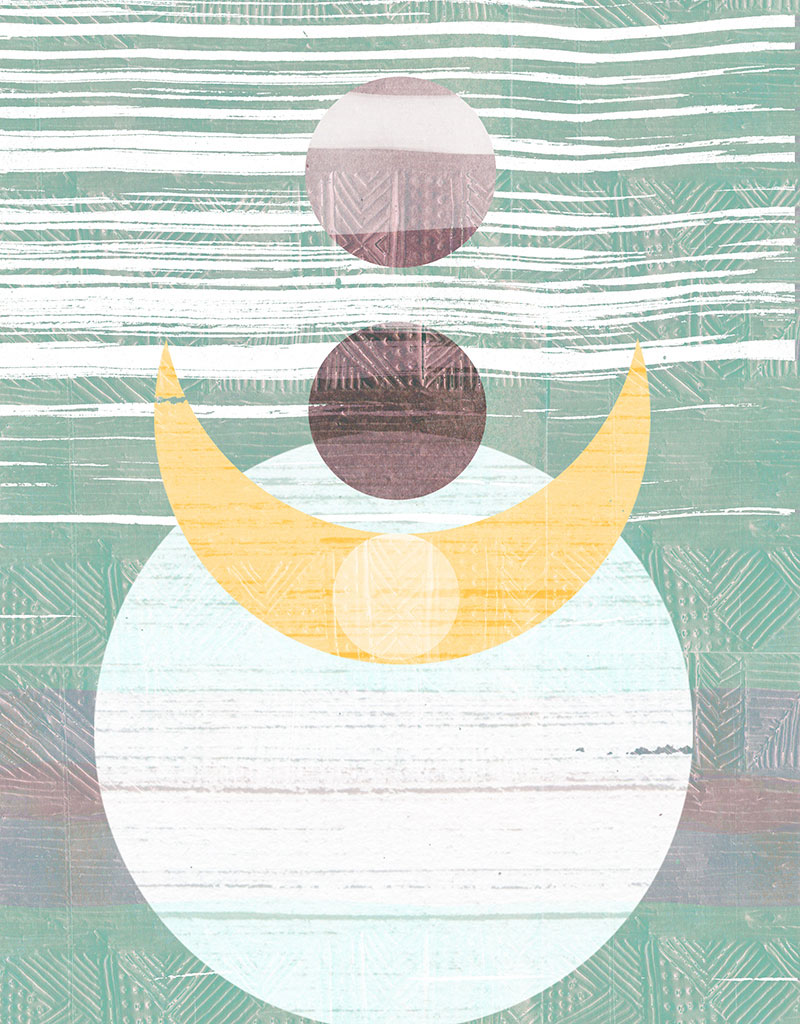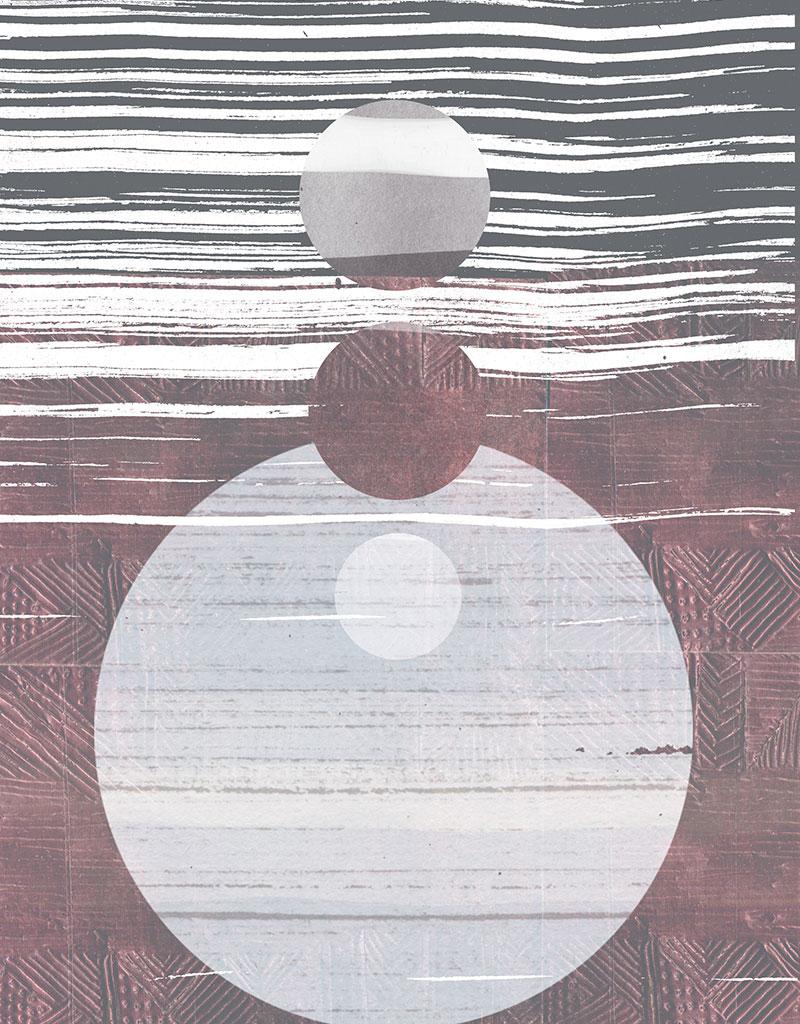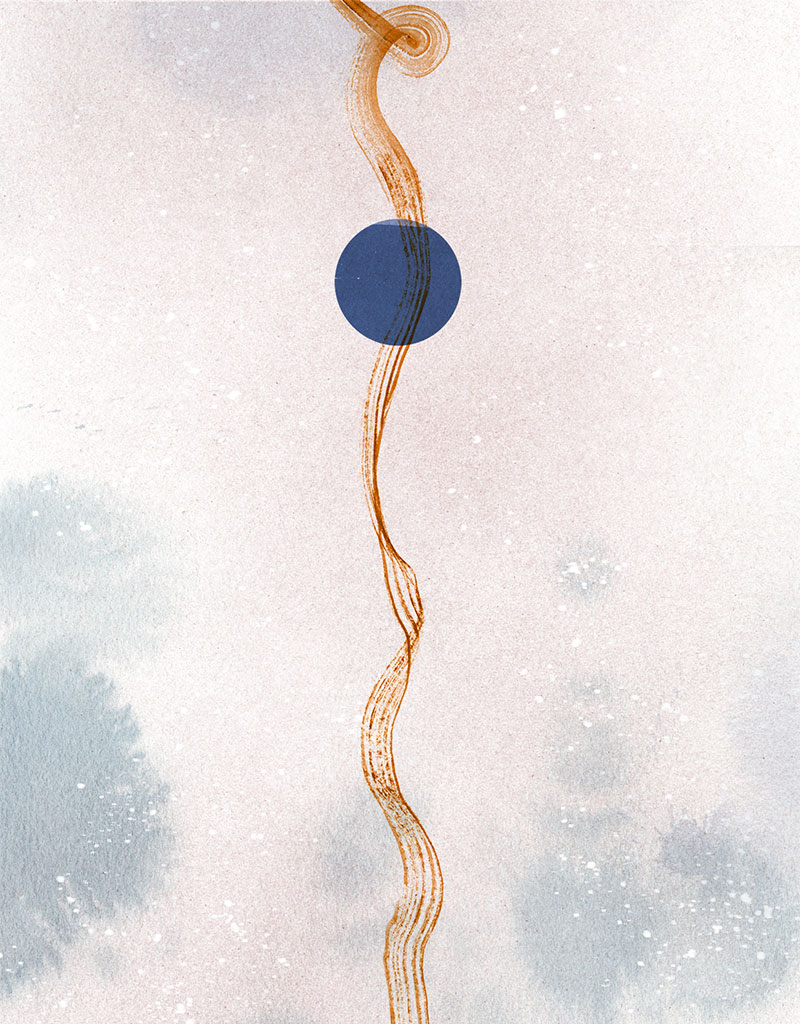Nilakshi Sharma

Pushpa-mas, or the month of flowers is how Chaitra, the first month of Basant rtu, is described in the epic kavya – Ramayana. After the quietude of winter Spring arrives with the onset of Chaitra month. With it Spring brings beauty that seems to burst forth in a riot of colour and sound. While flowers bloom everywhere, in every colour, the bees buzz as they dart from flower to flower, leaves rustle in Spring breezes and birdcall fills the air. The earth feels vividly, ostentatiously alive.
In the Bhagvad Gita, Spring is described as the King of the six seasons when Lord Krishna reveals his attributes thus: “I am the Soul in the body, the Mind in the senses… and of the seasons, I am Spring”. In the subcontinent’s traditional luni-solar calendar Basant rtu signals the start of a new year and a fresh cycle of seasons – the Samvatsara.
Thus, this season of beauty is also the season of fresh starts and renewals. There is a sense of vitality that pervades the environment. But this is also the time to shed the lassitude of winter and cleanse our bodies in preparation for the year ahead.
Spring Self Care
Spring brings with it a thawing; snow melts into water that flows down to us as rivers. In the Ayurvedic understanding a similar phenomenon is triggered in our bodies with the energy of Spring – the Kapha dosha accumulation of winter begins to melt.
Kapha, which is the dosha of earth and water, offers the qualities of stability and heaviness. Also known as the “dosha of substance”, Kapha element can help increase immunity, create needed moisture and lubrication for joints etc., and provide strength and stability to the body and the mind. But in excess it can induce sluggishness and lethargy in the body and create excess mucus, leading to congestion. Typically, “in Spring the Kapha accumulated in winter melts, producing allergy and fatigue.” Unless we undertake the practices that can help us eliminate the excess from our bodies safely. These practices can also help those of us who experience a flare up of allergies in this seasons due to the abundance of pollen and dust in the air. Some basic Ayurvedic practices coupled with exercise can really help us adapt to the change in season and qualities better.
After the cold, dry and yet damp qualities of winter, Basant, as per Dr Vasant Lad; an Ayurvedic doctor and practitioner;offers us the quality of warmth, moistness and unctuousness. Chaitra is a good time to cleanse and detoxify the body and to bring it into balance. Below are some of the gentle practices that can help.
Food: Eat Bitter, Astringent and Pungent tasting foods during this month. Avoid or at least moderate consumption of Sour, Sweet and Salty tasting foods.
Neem: The best of bitter tastes lies in Neem, which traditionally has been known as the poor man’s pharmacy in the subcontinent. In the month of Chaitra the tender new leaves of Neem come forth. Eat a few of these tender new leaves every morning on an empty stomach.
Caution: Do not consume regularly for more than a few day. Please do consult with a physician if you are on any medical prescription or pregnant.
Fasting: Fasts are a traditional practice that allows our bodies to adapt faster to a change in season or environment. You can start with gentle one day fasts on traditional fasting days like Ekadashi, Amavasya (New Moon) or Purnima (Full Moon). Or you can observe the Chaitra Navratri fasts for the traditional nine days – the austerity level of the fast undertaken should depend upon your state of health and what your body can withstand without depleting itself.
Digestive Tisane: Dr Lad recommends drinking a tisane of Ginger, Black Pepper & Cinnamon after each meal in this season. Or you can have the Cumin, Coriander & Fennel Tea: Steep 1/3 teaspoon of each in a cup of hot water for 10 minutes and then strain and drink. This is a gentle but effective decoction that supports digestive health and enhances gut health.
Kapha Pacifying Massage: Massaging the body can be an excellent way of stimulating and invigorating the body, especially when the type of massage is tailored to help us deal with excess Kapha accumulation.
- Abhyanga: This is an Ayurvedic ritual of self-massage for the body with gently warmed oil. In order to pacify Kapha, the oil used should be either Sesame oil or Mustard oil, which is especially good for stimulating agni in the skin. Use gentle long strokes with circular movements for joints such as the knees and elbows. After massage avoid exposure to cold and wind (such as an air-conditioned room or even a fan on a high speed). Ideally rest and wait for at least 30 minutes before bathing with traditional cleansing grains such as an Ubtan instead of soap. Lukewarm water should be used.
Caution: If your digestive agni is very low then opt for the Dry powder massage as that will be more effective.
- Dry Powder Massage: “Dry powder massages are heating, stimulating and dehydrating, making them beneficial for weak agni and excess kapha.” Regular dry powder massage “tones and exfoliates the skin, reduces fat tissue and weight, makes the skin radiant and glowing and improves skin complexion. It removes bad body odour and toxins and cleanses the skin.” For best results lightly oil the whole body with Sesame seed oil first. Then take the dry powder mix and starting with the feet, massage the body upwards using gentle long strokes. The massage movements should always be in the direction opposite of hair growth. After massage rest in a warm environment for at least 30 minutes before rinsing the body with warm or lukewarm water.
300g chickpea flour + 2tbsp each of dried Basil, dried Sage & finely ground rock salt + 1tbsp each of Neem powder, & Triphala or Amla powder. Mix all the powders and store in an airtight container.
Festivals of Basant
In the season that showcases both the beauty and the bounty of the earth many traditional harvest festivals and festivals that mark the start of the new rtu chakra are celebrated. Apart from the Navratri, two beautiful festivals of Chaitra are centred around welcoming the new year.
In Maharashtra Gudi Padwa is celebrated on the first day of waxing Moon phase in the month of Chaitra. This year it comes on March 22. It coincides with the start of the Chaitra Navratri. Colourful rangolis and decorations of welcome such as torans adorn households in the Marathi and Konkani regions of India. The festivities include food and singing and dancing and special street processions. For the Sindhi community too this is a day of celebrations and the start of a new year.
In parts of Karnataka, Andhra Pradesh and Telangana this same day, March 22, will be celebrated as Ugadi. And a ritual aspect of the festivities centres around food. On this day a traditional dish that is served is the Ugadi Pachadi. It is a simple dish made with Jaggery, raw Mango, Tamarind, Neem flowers, Salt and Green Chilli; and it comprises all the six flavours identified by Ayurveda: Sweet, Sour, Salty, Bitter, Pungent and Astringent. But this simple dish offers the most significant of life lessons – like each flavour and taste, life will consist of different seasons and phases.
May the month of beauty and fragrant breeze offer you all the gifts of abundance.





